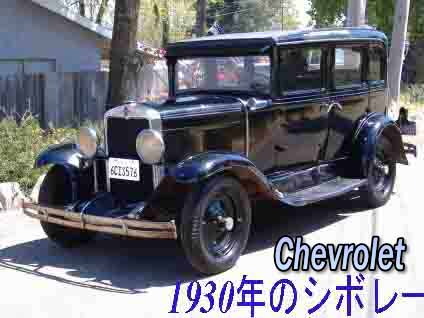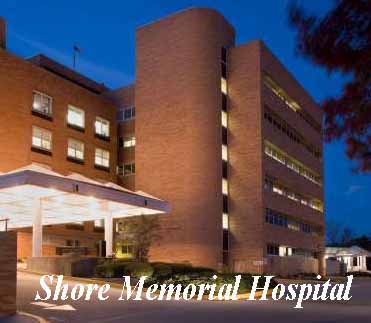|

One-month Journey to Indiana -- 9 Months in Bloomington -- Professor John C. Kennedy -- Akira's Personality
My mother's brother, Akira Ooka, who had gone to study in the United States at 22, died at the age of 24 soon after taking a degree in two universities. Facing the sudden death of his son, Hazama Ooka, his father, published a memoir book, "Evening Glow," collecting Akira's diary, letters and memorial statements sent from teachers and friends Akira had been associated with in and out of Japan.
On March 11, 2011 a devastating earthquake hit eas t Japan, and all the books fell from the shelves in my place in Tokyo. I started putting them in order, when I came across "Evening Glow" among the mess of books on the floor. I browsed through it, and found myself enthralled with it. Then, I perused it referring to some related sites in the Net. This year happens to be his 80th anniversary after his death in US. I was really curious about what was in his mind, and how his life in a country distant from Japan was like, when he went overseas by himself with strong determination to study in the beginning of Showa era (1930's), when there was no passenger plane, nor TV, nor was there even any efficient telephone systems. (Takeo Aizawa) t Japan, and all the books fell from the shelves in my place in Tokyo. I started putting them in order, when I came across "Evening Glow" among the mess of books on the floor. I browsed through it, and found myself enthralled with it. Then, I perused it referring to some related sites in the Net. This year happens to be his 80th anniversary after his death in US. I was really curious about what was in his mind, and how his life in a country distant from Japan was like, when he went overseas by himself with strong determination to study in the beginning of Showa era (1930's), when there was no passenger plane, nor TV, nor was there even any efficient telephone systems. (Takeo Aizawa)
* * * * * * * * * * * * * * * * * * *
Akira was born on Jan 22, 1908 in Hankou, China, where his father was stationed as an employee of Japan Cotton Co.  Ltd. However, as the family were called back to Japan next year, he started attending Kitano High School of Osaka. Then, he went on to Commerce Department of Kobe University. Upon graduation he went overseas to Bloomington, Indiana, to attend Indiana University. Having obtained a bachelor of business and financial studies in one year, he made further studies at the graduate school of New York University, and surprisingly got the MBA degree in one year. Ltd. However, as the family were called back to Japan next year, he started attending Kitano High School of Osaka. Then, he went on to Commerce Department of Kobe University. Upon graduation he went overseas to Bloomington, Indiana, to attend Indiana University. Having obtained a bachelor of business and financial studies in one year, he made further studies at the graduate school of New York University, and surprisingly got the MBA degree in one year.
His greatest mentor at Indiana University was a professor John C. Kennedy. He was so kind to Akira that he even invited him to his home in Willowick, Ohio, and let him stay with his family for two months during the summer before he went on to New York University. As his younger sister Genevieve says in later years, "Professor provided a haven for a Japanese student whose hair was black." It was he who recommended Akira to go on to NYU, and he even drove him to NY as part of family trip. And it was John C. Kennedy in whose arms Akira passed away!
In Central Manhattan, along the Hudson River is International House. Akira stayed at Room 4209 to attend New York University in lower Manhattan. International House, which the millionaire Rockefeller had donated, to accommodate 500 students from all over the world in those days. However, among the residents so far there had been no one who obtained MBA in a year.
Initially Akira's parents expected him to return to Japan after graduation of Indiana University, but he pleaded earnestly for more year of further study, so he was determined to take the degree in one more year. In NYU most students took 4-5 subjects in a year, but he took 7. Graduate students were expected to hand in more of semester essays and reports with more profound qualities. In fact Professor Goss of NYU advised him at the time of enrollment to attend it for two years, but Akira firmly insisted he should do it in a year. His tenacity amazed his mentor, but seeing Akira's subsequent serious efforts Professor Goss later admitted Akira was right, and he was wrong. However, we can imagine Akira must have faced an extreme hardship when a Japanese student tried to accomplish it what even American students had a great difficulty to do in a year. to take the degree in one more year. In NYU most students took 4-5 subjects in a year, but he took 7. Graduate students were expected to hand in more of semester essays and reports with more profound qualities. In fact Professor Goss of NYU advised him at the time of enrollment to attend it for two years, but Akira firmly insisted he should do it in a year. His tenacity amazed his mentor, but seeing Akira's subsequent serious efforts Professor Goss later admitted Akira was right, and he was wrong. However, we can imagine Akira must have faced an extreme hardship when a Japanese student tried to accomplish it what even American students had a great difficulty to do in a year.
And English was also a handicap to a Japanese although the experience in Indiana may have given him some confidence. He and his friend Toraichi Matsumoto launched up "Japan-US Student Association" to actually promote Japan-US friendship, and he himself became the Chair. In those days International House had 13 Japanese in it, but they were always associated only with each other, met and talked in Japanese. They didn't like their English to be heard by other Japanese, keeping themselves in a closed society. Then, he happened to have a chance of hearing a speech made by a cosmopolitan Yusuke Tsurumi, and was greatly impressed with his idea, and thought of the inauguration of the "Japan-US Student Association".
Still, he took 88 marks (the highest marks were 92) in the exam held 2 months after he got into NYU, which came 5th or 6th from the top in the whole class. It was in the midst of global recession. In Japan Premier Hamaguchi was shot to death, while a serious earthquake of seismic intensity 6 hit Izu peninsula. In New York young men hanging from their neck a plate saying "Unemployed" were seen to sell apples in the street. He discussed this situation with Dean Cornell, and decided on the theme of his thesis as "How Industry Is Relieving Unemployment in Period of Depression". Then, he concentrated on this issue and handed in the synopsis to him in January next year (1931). In the meantime, he paid a visit to New York Times, West Point, and other facilities. When he was invited to a party gi ven by Rockefeller and his wife, he sat at the same table with Rockefeller's son, and exchanged opinions with him at first hand. On the other hand the meeting of Japan-US Student Association held on February 14, 1931, Professor Eiichi Kiyooka (Yukichi Fukuzawa's grandson) of Columbia University and his wife joined in to make the total number of members to 15 (Americans 8, Japanese 7). The perfectionist Akira also wrote as many as 183 Christmas cards (101 addressed to Japanese, 82 to Americans). ven by Rockefeller and his wife, he sat at the same table with Rockefeller's son, and exchanged opinions with him at first hand. On the other hand the meeting of Japan-US Student Association held on February 14, 1931, Professor Eiichi Kiyooka (Yukichi Fukuzawa's grandson) of Columbia University and his wife joined in to make the total number of members to 15 (Americans 8, Japanese 7). The perfectionist Akira also wrote as many as 183 Christmas cards (101 addressed to Japanese, 82 to Americans).
But the result of the semester grades in the end of January was more than he had expected. Evaluations were A (= Excellent ), B (= Good ), C (= Fair ), D (= Barely Passing ), F (= Failure ). Usually C was an average, and B was something that needed painstaking efforts to take. However, the average B or above was required to take MBA. His final grades were
Business Administration --- Office Management (A)
Business Administration---Cost Analysis for Management (B)
Business Administration--- Production Control & Time Management (A)
Business Administration --- Management Principles & Practices (B)
Marketing (Commerce) --- Marketing Policies & Practices (B)
Marketing (Commerce) --- Advanced Marketing Activity Issues (B+)
Economics --- Business Philosophy (B)
It was an amazing job for a Japanese student to take B or above in all t he subjects, as even American students had difficulty in taking the same. He was told by other Japanese students that they took only "BCCC" or "BBCCD" or the like. Another challenging oral exam was scheduled in April, but once he passed it, he only had to hand in his graduation thesis, the synopsis of which had already been submitted. he subjects, as even American students had difficulty in taking the same. He was told by other Japanese students that they took only "BCCC" or "BBCCD" or the like. Another challenging oral exam was scheduled in April, but once he passed it, he only had to hand in his graduation thesis, the synopsis of which had already been submitted.
The oral examination which took place on him on April 22 lasted 35 minutes on end. Questions after questions were thrown to him by professors over the details of his subjects, but he could manage them, and successfully passed it the first time he tried. The oral exam was given only twice a year, so if he had failed, he would have had to wait a long time.
And then he spent one more month in completing his thesis. Before he submitted it, he had an idea of driving through the east of the US, including Bloomington, Indiana, where he wanted to thank again to Professor Kennedy, who he was indebted to for the great care as if he were his father. He also had a strong wish to promote Japan-US Student Association to other universities. He had taken a driver's license when he spent the summer vacation with Professor Kennedy. He even had bought a used Chevrolet. The exchange rate was 1 dollar to 2 yen at that time, and he could get a used car in 20-30 dollars. It was really a fairly awful car, but he used it as a means of transportation to NYU. Even when he couldn't start the engine using the manual crank handle, he asked his colleagues to push it up the slope in front of International House. Then, he managed to start the engine while it ran down the slope. Anyway, he proposed the idea of driving to his close friend Matsumoto, who joined in. Another friend in the same dorm, student from  France, also was interested, so three of them started out in his lousy car. At least cars at that time are roomy enough inside to sleep in, so they could save the money for accommodation. They also cooked meals burning dead leaves and branches in the field. Only Akira had a driver's license, so he had to cover 3,200km (2,000miles) all by himself for two weeks from June 6 on end. France, also was interested, so three of them started out in his lousy car. At least cars at that time are roomy enough inside to sleep in, so they could save the money for accommodation. They also cooked meals burning dead leaves and branches in the field. Only Akira had a driver's license, so he had to cover 3,200km (2,000miles) all by himself for two weeks from June 6 on end.
Finally when he came back to NY, he had an idea of returning to Japan by way of Europe. But he couldn't ask his father for more money for that. So, he started working part-time together with his close friend Kisaku Hagiwara at a Japanese company in Ocean City, New Jersey. Japanese students with student visas are not allowed to work in an American company. On the morning of July 10, two weeks after he started working, he suddenly fell to the ground fainted as though all fatigues had piled up to the limit. Hagiwara, working together, immediately called up Dr. Hanes, and he was taken to Shore Memorial Hospital in the neighborhood.
Initially the doctor in charge of him was fairly optimistic, and Akira cheerfully talked to nurses, and asked even for a handshake when Hagiwara visited him. However, after 20 days passed, his condition was still no better than before. So, they called Dr. Iwamoto from NY, and was told, "We can no longer be optimistic." In fact, his body temperature stayed around 40.5 degrees C (105F) for a couple of days. Then, on August 6 the temperature dropped to the normal, but he was just heard mumbling something. Hagiwara, surprised at Akira's sudden change, tried to seek his last words, but "I am still OK," was his weak response. Gradually, he lost his consciousness, and his life of 24 years came to an end at 5:30pm of the day.
On August 9, 1931, his body was moved to Campbell Funeral Home in Madison Ave., NY and the funeral service was conducted by Pastor Ohori. Then, his body was cremated at Grendale Long Island Fresh Pond Crematory. In an age when no passenger aircrafts were available, it was impossible to transport his body to Japan without cremating it. An employee of Japan Cotton Co., who happened to be back to Yokohama in the SS Shunyo Maru, delivered his ashes to his father waiting at Port Yokohama. It was September 8, more than one month after his death. Hazama, who had seen off his son full of hope at the same port, ironically met with his ashes two years later. In the main hall on the 1st floor of the office of Japan Cotton Co. right in front of the pier, a burning incense stand was provided, and dozens of attendees faced his death-mask photo in tears.
On t he previous day, Charles Lindbergh and his wife made the first successful transpacific flight from the US, and visited for celebration US Consulate located on the second floor of the same building. And on the day of his ashes arrival, two astronauts, Donald Moyle and Cecil Allen, took off Japan on a nonstop flight across in the propeller plane to the US. Hazama says he felt some coincidence with Akira's enthusiasm. he previous day, Charles Lindbergh and his wife made the first successful transpacific flight from the US, and visited for celebration US Consulate located on the second floor of the same building. And on the day of his ashes arrival, two astronauts, Donald Moyle and Cecil Allen, took off Japan on a nonstop flight across in the propeller plane to the US. Hazama says he felt some coincidence with Akira's enthusiasm.
Akira's ashes, carried by his father in an Tokaido express train, Fuji, reached his hometown Kobe in 10 hours. Father wrote, "It was really the height of painful, heartbreaking situation that Akira's mother and sisters clung to the ash pot crying and screaming with tears."
Then, the funeral was performed again at Seisenji Temple in Osaka. After being kept for some time in Manpukuji Temple in Suma, Kobe, his parents started for Shimabara, where they buried him in their ancestral cemetery with his Buddhist name inscribed in the family tombstone.
< Next Page>
  
|